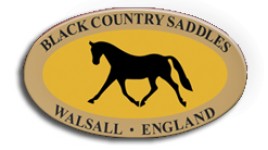Posted: 3rd November 2015 | Back to news feed

There are so many girths available on the market today that it can be difficult to choose which one is best for your horse. This feature looks at a selection of these girths and explains the differences between various types.
Generally, there are two distinct basic styles which suit the length of billet strap on your saddle. The conventional girth for GP, Jumping and close contact saddles is required to fit short billet straps which don’t reach below the saddle flaps. However dressage girths are much shorter as they attach to billet straps which are long and fasten below the saddle flap so that the buckles do not interfere with the lower leg position.
Whether you require a dressage or regular length girth, they all come in different shapes, sizes and materials. The material can affect the fit, performance and durability of the girth and its comfort for the horse. Leather girths that are good quality are the most expensive but if well cared for will last a long time and provide a comfortable option for your horse. String or cotton girths are cheaper but can cause rubbing for some horses.
Some English girths will have elasticated ends between the buckle and the girth strap which helps with fastening and gives the girth more flexibility.
The Atherstone girth is a conventional length and is designed to be chaffeless through its shape. It is curved around the back of the elbows so this section is narrower, allowing better freedom of movement.
A similar type of girth is The Balding which is a single piece of leather cut into three strands. The outer two pieces are crossed over one another like a braid. The Atherstone is similar but is made from a singular piece of leather which is then shaped or has another curved piece of leather added to it. However, non-leather Atherstone shaped girths are available and the ‘waffle’ design can encourage airflow.
A jumping girth, or stud guard, is shaped with a large oval panel in the centre which prevents the horse from kicking its stomach when jumping.
Dressage girths also come in a range of different materials and styles. Leather is a popular choice and a shaped design is preferable for allowing maximum movement of the horse. Many are padded to provide extra comfort and some are lined.
Breathability and comfort are important elements in a girth and the material and style chosen should incorporate this. Modern technology has very much been brought into girth designs of today and has significantly improved the styles available. Although ‘high-tech’ girths may be more expensive, in the long run they may be worth it if they reduce the likelihood of causing chaffing on a hot horse or girth sores. The design of girths has been seen to significantly contribute to horse’s performance so bear this in mind when purchasing.
For more information contact Black Country Saddles on 01543 578 243 or visit www.blackcountrysaddles.com


The Equestrian Index newsfeed is compiled from articles submitted by advertising members and expresses the opinions of those members. Watsons Directories Ltd shall not be held liable for any inaccuracies or mis-statements therein.